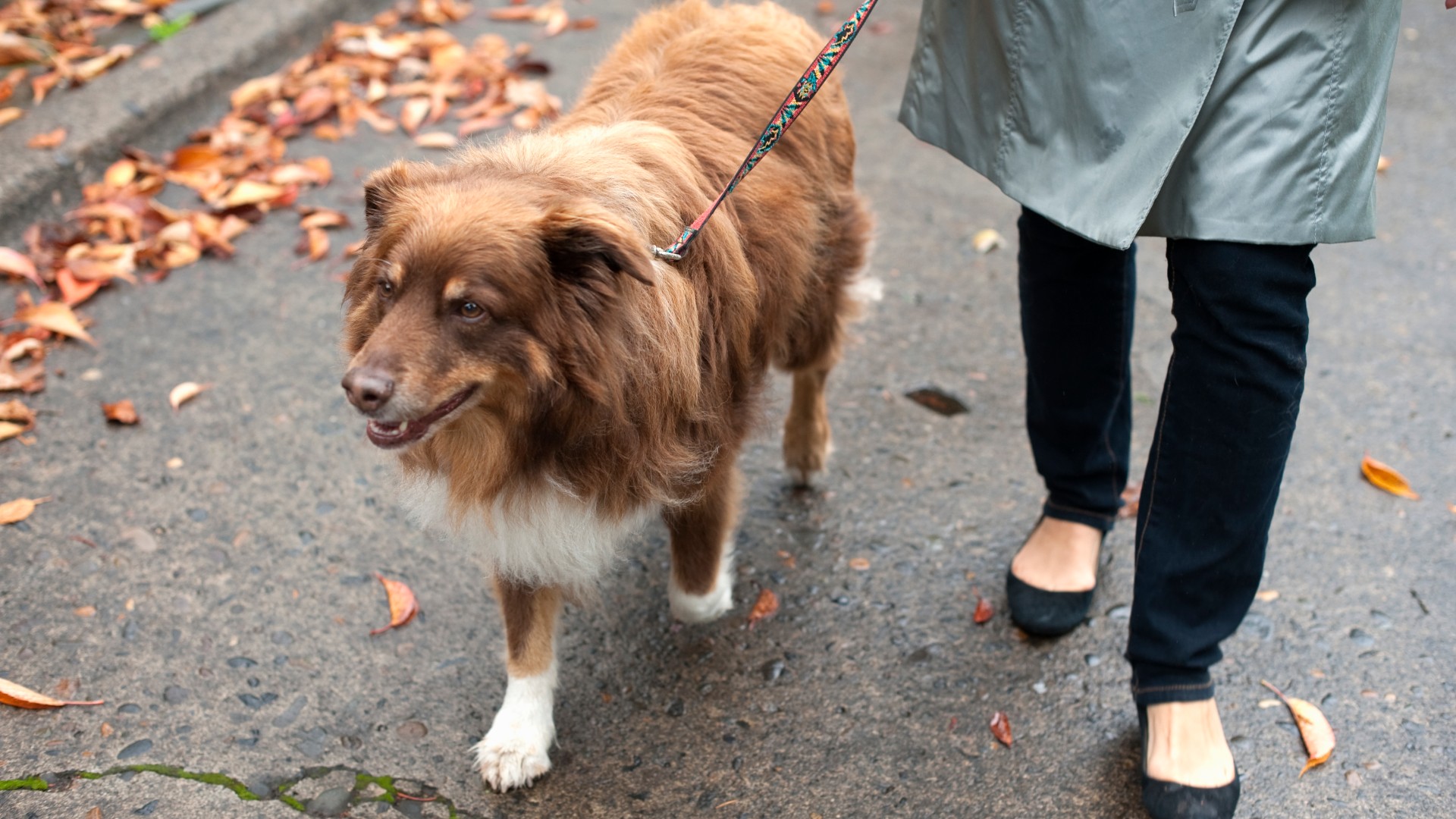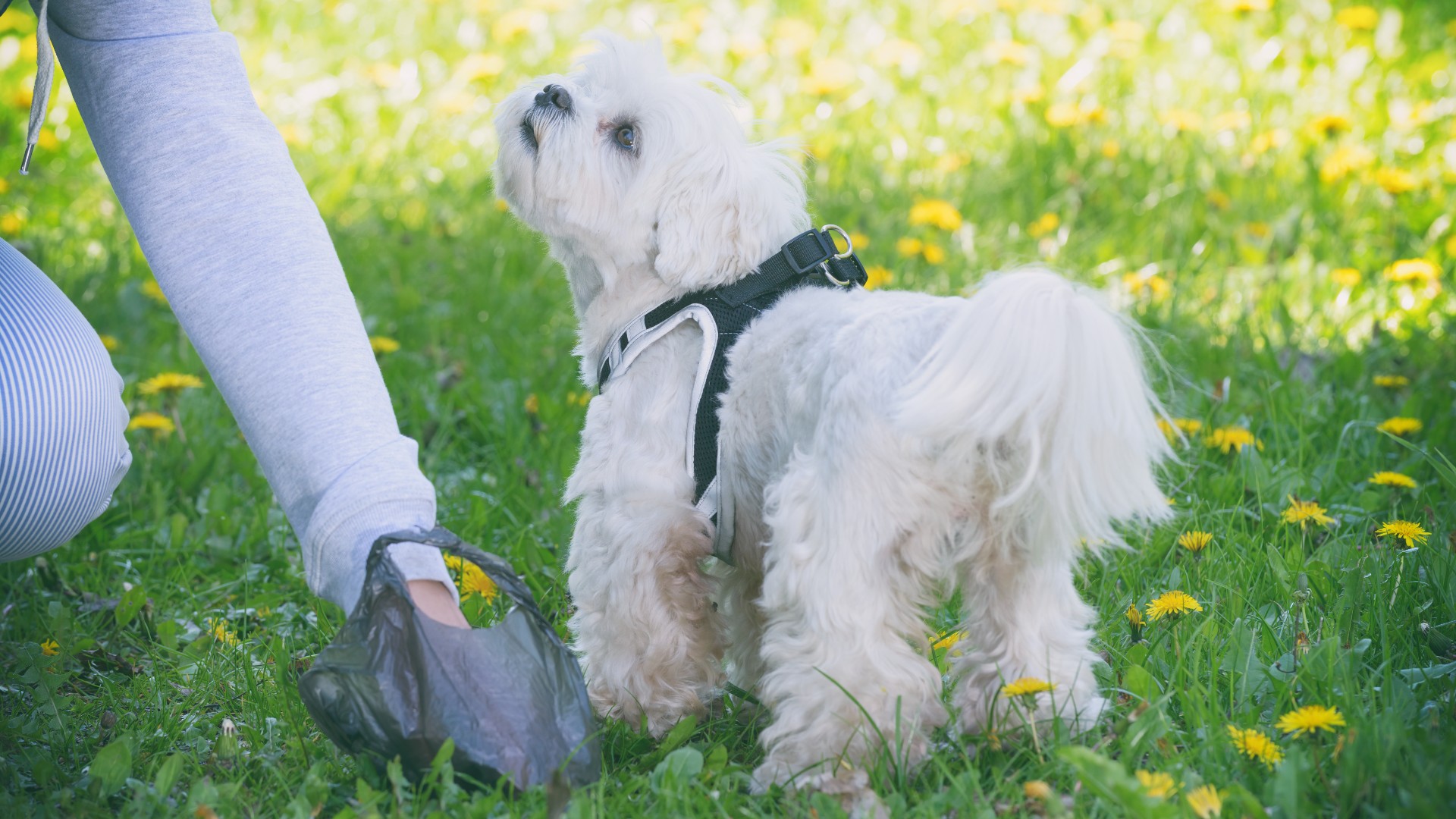Dog walking etiquette: 6 tips for stress-free strolls
From scooping that poop to getting your pup to return on command, these dog walking etiquette tips will ensure you and your furry friend stay safe and have fun

Whether you're at the park, the beach or on the trail, practising proper dog walking etiquette will ensure you and your canine companion are always leading the pack by setting a great example. And while the below tips may feel a bit restrictive, they're there to make sure that both you and your pup stay safe when you're out and about.
From maintaining good relationships with your neighbors and fellow pet parents to ensuring our outdoor environments remain safe for everyone to enjoy, knowing all the basics when it comes to good dog walking etiquette can help make sure those daily walkies are always an enjoyable experience.
To help make those daily strolls as stress-free as possible, we've pulled together all our favorite tips. They're a great refresher if you're a seasoned dog owner and if you're a new pet parent, they can help you learn the ropes before you head out on an adventure with your canine companion. Either way, these best practices for walking your dog will ensure you stay in everyone's good graces.
And if you prefer walking to running, don't worry, we've got you covered there too. Check out our 10 tips for running with your dog, which has everything you need to make sure you and your pooch can pound the pavement together happily and safely.
1. Scoop that poop

If you’ve ever had the unfortunate experience of stepping in dog poop, then you know how unpleasant it can be. While some dog owners fail to clean up their dog’s poop because they’ve forgotten to bring a bag, others leave it mistakenly thinking it works in much the same way as fertilizer, nourishing the grass as it decomposes.
According to U.S. Environment Protection Agency (EPA), it’s one of the biggest myths around, and it’s causing our waterways to become polluted. “Animal waste contains two main types of pollutants that harm local waters: nutrients and pathogens,” says the EPA. “When this waste ends up in water bodies, it decomposes, releasing nutrients that cause excessive growth of algae and weeds. The pathogens, disease-causing bacteria and viruses, can make local waters unswimmable and unfishable and have caused severe illness in humans.”
When you’re out walking with your dog, always ensure you’re prepared to pick up their poop and dispose of it safely. Carry poop bags with you, use specially marked dog poo disposal bins in parks, and don’t let your dog do their business within 200 meters of a water body.
Get the best advice, tips and top tech for your beloved Pets
2. Keep them on a tight leash

Okay, well maybe not too tight, but you know what we mean! While it can be tempting to let your dog run wild and free, we really recommend that you resist the temptation to do this and instead keep them on a leash when you're out walking together.
Even the most well-trained dogs can’t resist sometimes darting off when something catches their attention (this is especially true of those in the hound group) or they get spooked, so keeping them on a leash ensures they remain safe.
You also don't want any unwanted pregnancies on your hands and if your dog isn't spayed or neutered, there's always the chance that they're going to indulge in a quick bit of a fun while they're out of sight - which, let's be honest, is every dog owners worst nightmare. All it takes is a few moments of your back being turned and suddenly you’re a pet grandparent to a litter of puppies!
If you do decide to let your dog off its leash, consider investing in one of the best pet trackers. These nifty devices can be mounted onto your dog’s collar, allowing you to quickly and easily locate them if they go sprinting off and end up out of sight.
3. Be respectful
It’s likely that while you’re out walking, you and your canine companion are going to encounter other dogs, people, property, and wildlife. Being respectful of your environment is one of the most important things to remember as a dog owner.
Before you let your dog interact with other dogs, fellow pet parents, or children, ensure you ask permission first. While you love your pooch to pieces, many people are apprehensive around dogs and may feel nervous or fearful if your dog comes bounding towards them or tries to jump up to say hi.
You’ll also want to be mindful of what your dog gets up to if you’re walking in a residential neighborhood. Most people will frown upon having a strange dog poo or urinate on their front lawn, come barreling through their garden destroying their flower beds, or engaging in a game of chase with their much-loved, and now rather scared, kitty.
While you may adore your dog’s social butterfly behavior and lovable exuberance, other people may not feel the same way. Stick to the sidewalks when you’re walking in your neighborhood, keep your dog on a leash to avoid them entering private property, and allow plenty of space between you and your dog and other people.
4. Get on top of that training

Your best friend when it comes to mastering dog walking etiquette is definitely training and getting this right is going to be the key for making sure those daily walks are smooth sailing from start to finish.
When you teach your dog certain commands, what you're basically doing is teaching them what behavior is and isn't acceptable when you're out and about together. Focus on basic commands, such as ‘sit’, ‘stay’, ‘down’, ‘come’, and ‘no’, which will help you feel in control of your dog when you’re walking together.
In addition to teaching the commands, you want to make sure you teach your dog to walk close to you, to not jump up on other people or dogs, to not bark, and to stop at busy roads. You also need to know that if you do let them off their lead at some point, that they'll come back the minute you call them.
The easiest way to train a dog is through the use of positive reinforcement. Take a bag of the best dog treats with you whenever you’re out walking and reward your canine companion every time they do what you’ve asked them to do. This reinforces good behavior and makes it more likely that they’ll continue to follow your instructions.
5. Safety comes first
While it's definitely important to make sure that you keep other people and animals safe, let's not forget that keeping yourself and your dog safe is equally important! We know how tempting it can be to catch up on calls while you're out walking or have some upbeat music playing to keep you motivated while you're striding it out, but at the risk of raining on your parade, it's best to stay focused on your surroundings.
We know, we're sounding like total party poopers, aren't we?! But when you give your full attention to your walk without any distractions, you'll be better placed to spot other people, dogs, cars, and any other potential hazards that could put you and your dog at risk.
If you walk regularly in the dawn, dusk, or dark, make sure that you and your pooch are visible. Some of the best dog coats, leads, and collars come with reflective stitching that allows both cars and pedestrians to quickly spot your furkid. If you’d rather not deck yourself out in reflective gear, there are some stylish cuffs and safety bracelets around these days that are just as effective.
6. Teach good recall
While we've recommended you don't let your dog off their leash, if you do prefer to let your dog walk freely along beside you, it's really important that you've taken the time to teach them good recall.
Your dog must be able to come back to you the minute you call them and they must have been socialised to know that it's not okay to jump up on other people or try and greet other dogs who are on a lead - the other dog may not be as friendly, may be scared of strangers or could be in training or recovering from an operation, the latter of which makes them more likely to lash out.
If your dog is off their lead and you spot another dog approaching who's on their lead or there are small children or elderly people around, make sure to call your dog back immediately and reward them with a treat. Put them on a lead until the other dog or humans have passed and then you can let them off again.

Kathryn is a freelance writer who has been a member of the PetsRadar family since it launched in 2020. Highly experienced in her field, she's driven by a desire to provide pet parents with accurate, timely, and informative content that enables them to provide their fur friends with everything they need to thrive.
Kathryn works closely with vets and trainers to ensure all articles offer the most up-to-date information across a range of pet-related fields, from insights into health and behavior issues to tips on products and training.
When she’s not busy crafting the perfect sentence for her features, buying guides and news pieces, she can be found hanging out with her family (which includes one super sassy cat and a kitten), drinking copious amounts of Jasmine tea and reading all the books.
She has written for a range of publications, including Fit&Well, Top Ten Reviews, LiveScience, Goodto, and Product Hunt.
